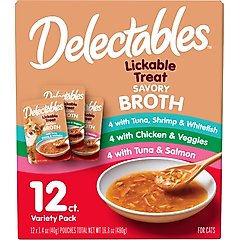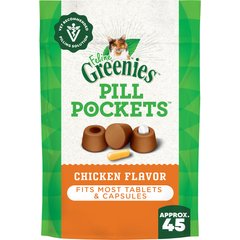How To Give Liquid Medicine to a Cat
Giving your cat medicine isn’t exactly a warm and fuzzy bonding experience for the two of you. But the better you become at learning how to give liquid medicine to a cat, the easier and less stressful the task. To help you both work through this hurdle, we’re sharing veterinarian-approved tips and tricks to get your cat to take their medicine.
Preparing Your Cat’s Medicine
Before administering medication, pet parents should keep the following in mind, advises Ann Hohenhaus, DVM, a senior veterinarian and director of pet health information at Schwarzman Animal Medical Center in New York City.
- Dosage: Confirm how much of the liquid medication you should give to your cat. Your veterinarian will determine an amount based on the medication itself, your cat’s weight, and other factors.
- Frequency: Always double-check the recommended frequency. It may be daily, twice daily, every other day, every two weeks, etc. “All are possible dosing frequencies,” Dr. Hohenhaus says. “Make a chart and put it on your calendar, or set a daily alarm so you don’t forget.”
- Food: Some cat medications are meant to be administered on an empty stomach, while others should be given with food. This is typically printed on the label or in written instructions, but double-check with your vet if you’re unsure.
- Storage: Review whether your cat’s medicine should be stored at room temperature or in a fridge. Improper storage can render their meds less effective.
- Side effects: Though most medications come with very minor side effects, it’s still a good idea to be aware of anything that could go sideways. Review common side effects with your doctor so you know what to look for, and when/how to respond in the case of an extreme reaction.
3 Ways To Give a Cat Liquid Medicine
There are a few ways to give a cat liquid medicine, so experiment with the different methods to see what works best for your cat.
1. Direct Oral Administration With a Syringe
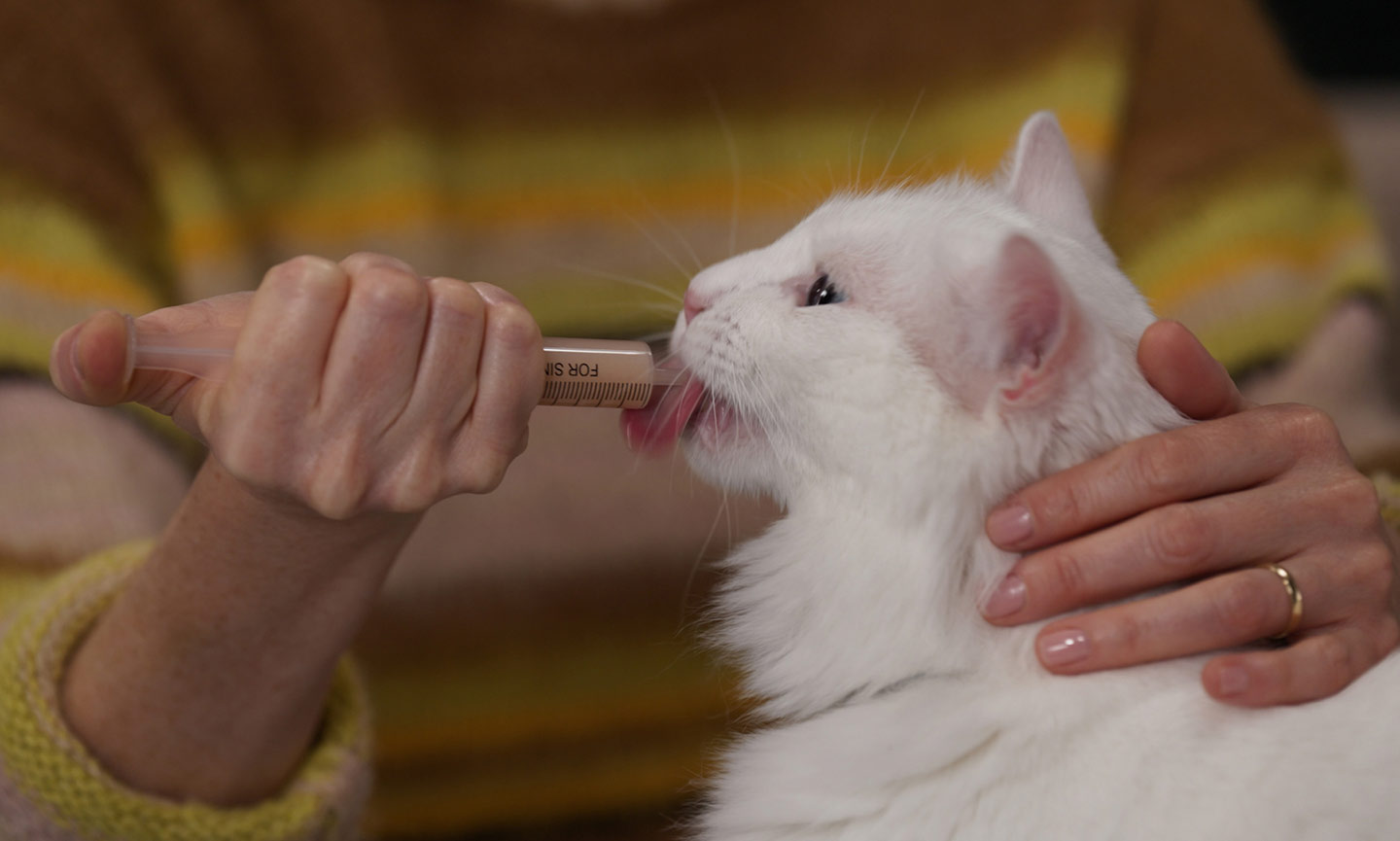
Draw the correct dose of medication into the syringe, then hold your cat.
“You can either hold your cat in your lap or place them on a non-slippery surface. Gently hold them in place without causing stress,” says Colleen Guilfoyle, DVM, a veterinarian for Best Friends Animal Society in Kanab, Utah.
Hold the syringe with the medication in your dominant hand, and place the tip of the syringe near your cat’s mouth.
Next, gently tilt your cat’s head back (just slightly) and use your thumb or fingers to open the mouth. You don’t need to force it open too wide—just enough to slip the syringe into the side of their mouth.
Slowly squirt the medication into the side of the mouth, aiming for the back of the throat. Don’t squirt it too quickly, since this can cause your cat to choke or spit it out.
Pro Tip: Prepare all the medication in advance and choose a quiet, familiar space to administer, Dr. Guilfoyle says. “Afterward, offer praise, treats, and extra comfort to help them associate the experience with something positive.”
2. Mixing Medicine With Food
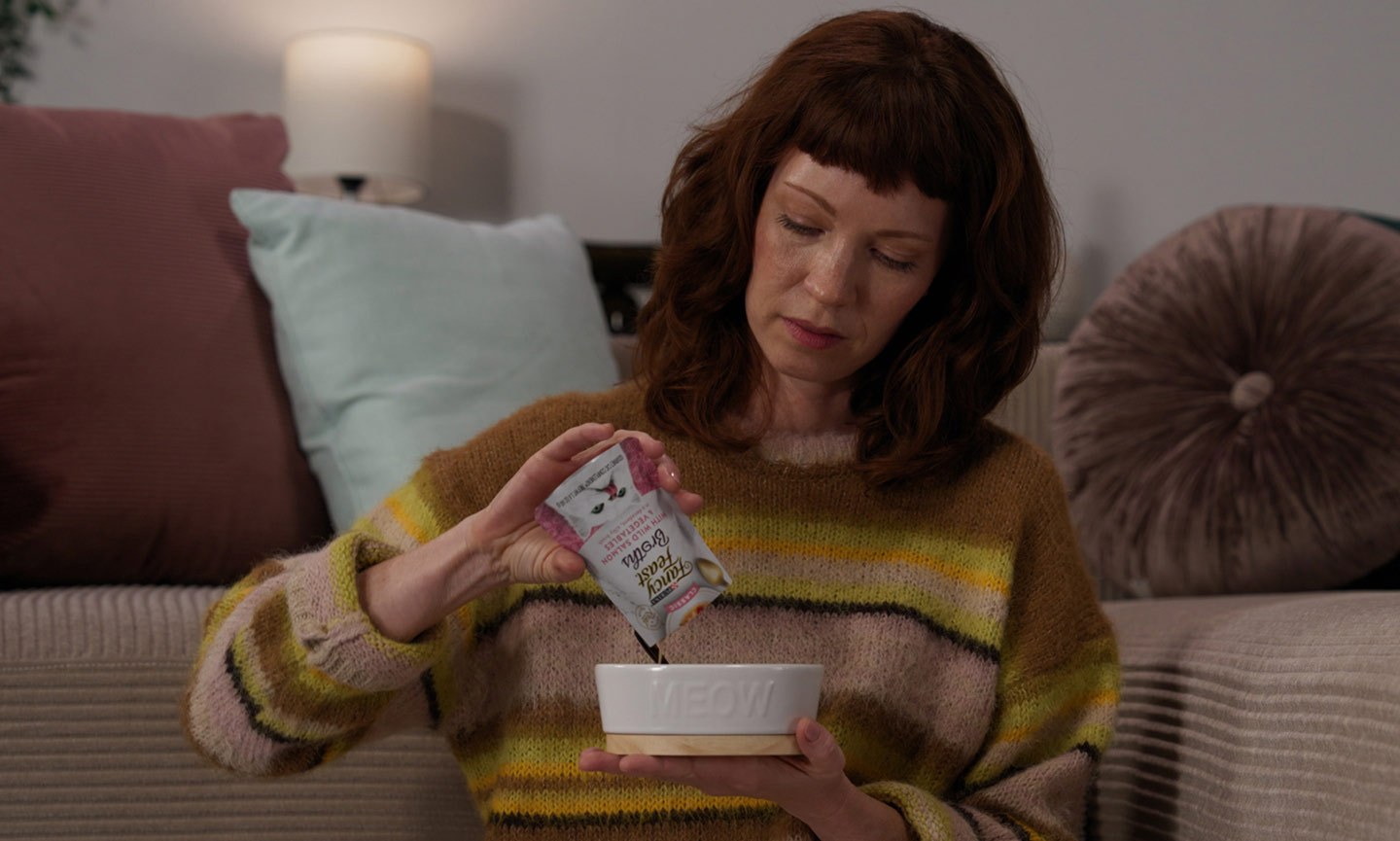
If your cat just isn’t having this whole liquid medicine exchange, you may be able to mix it with their food. However, this only works if the meds can be taken with food versus on an empty stomach, Dr. Hohenhaus says.
To try this approach, mix the recommended dosage with a small amount of their favorite wet food (a broth such as Hartz Delectables Savory Broth works well) and let your kitty enjoy it.
This method isn’t most vets’ No. 1 choice, because it comes with a risk that your cat may not eat the entire amount of food, which would mean they’re not getting their prescribed dosage, says Dr. Hohenhaus. If you try this approach and your cat does not eat the full amount, contact your vet for next steps.
Recommended Product
3. Utilize Pill Pockets or Other Aids
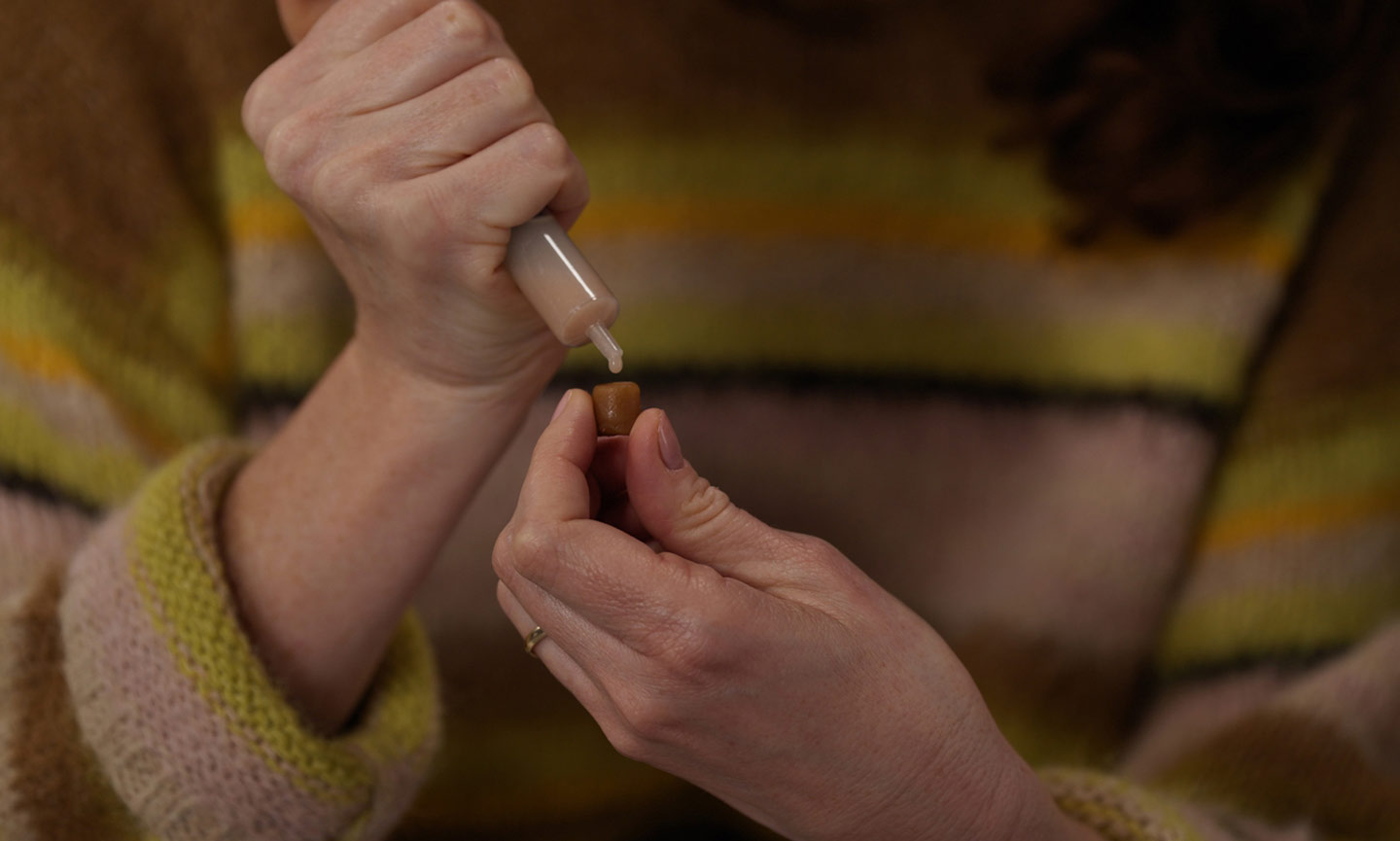
If you only need to give your cat a small amount of liquid medicine, using a pill pocket can work too. A good option is Greenies Pill Pockets Feline Chicken Flavor Natural Soft Adult Cat Treats.
Dispense the prescribed amount into the pocket and seal it. It may be best to insert the pocket into your cat’s mouth to ensure they get the entire dosage. And again, Dr. Hohenhaus says to double-check whether you can give the meds with food.
Recommended Product
Tips for Dealing With Uncooperative Cats
If it’s a struggle to give your cat liquid medication, know that you’re not alone. In fact, 77% of cat parents report that their sweetie bit or scratched them when attempting to administer meds.
This can be a high-stress situation for both of you, but the following tips can help.
- Create a calm environment: A quiet, stress-free environment can help both you and your cat get through this more easily. “Use soothing methods like soft voice or calming pheromones, and try to distract them with treats or toys,” Dr. Guilfoyle says.
- Try a kitty purrito: Scratching and biting is no fun. Dr. Hohenhaus says to create a “purrito” by wrapping your cat snugly in a towel or blanket before administering liquid medication. Leave only their head out and keep the paws tucked inside.
- Mask the bitter taste: Often, kitty medicine isn’t exactly the most pleasant tasting. So how do you hide the bitter taste of liquid medicine for cats? Mixing it with a broth or offering a treat afterward can go a long way. Dr. Guilfoyle says that “some pharmacies may flavor medications during preparation,” so check with your vet.
- Reward them: If your kitty associates medicine time with a high-reward treat, they may acclimate easier. Choose something they really love, and make sure to give them lots of praise afterward too!
Administering medications to your cat requires patience, persistence, and practice, so don’t give up if it doesn’t start out easy. Remember that this is important for their health over the long term and that you’ll both adapt. If you continue to struggle, schedule an appointment with your vet for a medication lesson.
This content was medically reviewed by Teresa Manucy, DVM, Chewy veterinarian.
